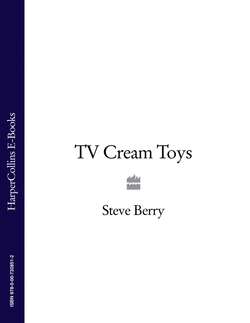Читать книгу TV Cream Toys Lite - Steve Berry - Страница 25
Chemistry Set Kitchen-based catalysis
ОглавлениеCommon-or-garden chemistry set box lids always featured a boy with brown hair in the pudding-bowl style, wearing a white lab coat and peering intently at a few cubic centilitres of vaguely blue compound in a test tube. The over-serious look in his eyes said it all: Why won’t this explode?’
Yes, the substances you’d find inside one of these were always disappointingly dull. An average set included that dependable stalwart, bloody copper sulphate,1 followed by a rack of anonymous-looking off-white powders (‘slaked’ lime, tartaric acid, etc.2) and rubbish like iron filings and litmus paper. C’mon guys, where do you keep all the fun stuff? The red lead? Arsenic? Silver nitrate? A lame spirit burner provided the only hint of impending danger, and there were usually only enough chemicals to do about ten experiments. And one of those was ‘growing a crystal out of sugar’ on a string. (On a string, for crying out loud!) Heaven only knows what we were supposed to do with the mysterious ‘watch glass’. Just sit and watch it, perhaps?
See also Electronic Project, Magic Rocks, Tasco Telescope
But at least the chemistry sets marketed by the likes of Salter and Merit made some affectation towards proper school lab learning. Dreary they may have seemed, but they didn’t patronise us youngsters like the modern-day National Curriculum-approved ‘yukky science’-type sets. Chemistry isn’t fun, no matter how much you dress it up with ‘slimy’ green food colouring and ‘funky’ fizzy sherbet. Write that down. On those earlier sets you’d find abundant warnings of the ‘adult supervision recommended’ kind in the instructions, even though every single kid in the land threw them away. If you couldn’t bang out a batch of stink bombs, then it was hardly worth the effort. The sole experiment conducted thereafter could be noted down thus: ‘Just bung a bit of everything in one test tube; then heat it up to see what happens’ (results: lame fizzing and stuff that glued itself to the kitchen table). As if we were hoping to drink the stuff and then transform, Dr Jekyll-style, into a horrible monster and eat our own parents. No, really…as if!
1 In the presence of water, anhydrous copper sulphate turns blue. To test for reducing sugars (aldehydes), a solution including blue copper sulphate will turn red. So there you have it: the most exciting thing you can do with copper sulphate is watch it change colour. It is the chemical-compound equivalent of a traffic light.
2 Off the top of our heads? Probably ammonium chloride, calcium hydroxide, sodium carbonate, sodium hydrogen sulphate, aluminium potassium sulphate, phenolphthalein, zinc, calcium carbonate, ammonium iron sulphate, iron sulphate and sodium thiosulphate. All that, and a tiny bog-brush for cleaning out test tubes!
